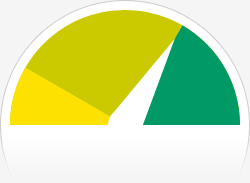Archiv
Grosses TaTaaa für eine neue FB-Page
… äusserst sehenswert und wer weiss, vielleicht für die Urheber auch lohnenswert?
No Facebook without the Dutch:
„A special Seamail to Mark Zuckerberg… by the Dutch National Maritime Museum to announce its brand new Facebook page“
It’s the end of the web as we know it
„It’s the end of the web as we know it“ ist ein beeindruckender Blogpost von Adrian Short. Selbst The Guardian publizierte am 27.09.2011 diesen äusserst spannenden Artikel zum Thema Social Media unter dem Titel „Why Facebook’s new Open Graph makes us all part of the web underclass„. Inhaltlich beschäftigt sich dieser unter anderem mit Fragen wie: Wo führt der heutige Social Media Hype (Trend) hin und was bedeuted das für die User, also für uns? Hier ein paar spannende Ausschnitte aus dem Artikel:
„Not so long ago you had to be on MySpace if you were an up-and-coming band. Now it’s probably Facebook. Either way, your social network presence is more important than your own website.
[…] Weiterlesen …
TREND? Museen und soziale Netzwerke
Das Monopol – Magazin veröffentlicht einen spannenden Artikel zum Verhältnis von Social Media zum Bildungsauftrag moderner Museen:
„Deutsche Museen tun sich schwer im Umgang mit sozialen Netzwerken. Doch die Präsenz bei Facebook, Twitter und Co. ist nicht nur eine Frage der Popularität, sondern auch des Bildungsauftrags einer Institution. Ein Weckruf!“
Eine Facebook Group für Kulturschaffende, die sich fürs Web 2.0 interessieren?
… ja das gibt es: http://www.facebook.com/home.php?sk=group_139168352800567
Wer sich also gerne an der Diskussion beteiligt ist herzlich willkommen.
ZHdK MAE Masterthesis Dokumentarfilm Konversation
Die folgenden Zeilen gehören zum kleinen Dok-film über meine MA-Thesis, den ich hoffentlich schon bald hier auf meinem Blog präsentieren darf.
***************************************************************************
Museum 2.0
Wie Museen Social Media für ihre Kommunikation nutzen können
1988 machte ich meine ersten Gehversuche mit einem PC von Olivetti. Acht Jahre oder viele PC-Generationen später besuchte ich zum ersten Mal ein Internetcafé. Wenn ich heute auf dem Web surfe stelle ich fest: dass das Potenzial des Web 2.0 insbesondere von Museen noch immer unterschätzt und deshalb auch nicht ausgeschöpft wird.
Um diese These zu überprüfen, ging ich der Frage nach, ob Museen Facebook, Twitter und Blogs benutzen und formulierte während der Quellensuche drei Fragestellungen:
1. Was ist der State of the Art im Umgang mit Social Media für Museen?
2. Wie machen sich das MoMA in NY und die Serpentine Gallery in London Social Media-Werkzeuge für ihre Kommunikation zunutze? Und welche Konsequenzen ergeben sich daraus?
3. Inwiefern sind Social Media für Museen relevant, auf was ist zu achten und wie ist damit umzugehen?
Während der Arbeit an meiner Masterthesis verbrachte ich 2 Monate in Shanghai und 3 Monate in London für ein Praktikum in der Serpentine Gallery, wodurch ich die Institution von Innen kennenlernen konnte.
Eine interessante Studie -> Unternehmen & Social Media
SocialMedia Governance 2010
Wie Unternehmen, Staat und NGOs die Herausforderungen transparenter Kommunikation im Internet steuern
2010 in review
The stats helper monkeys at WordPress.com mulled over how this blog did in 2010, and here’s a high level summary of its overall blog health:

The Blog-Health-o-Meter™ reads This blog is doing awesome!.
Crunchy numbers

A helper monkey made this abstract painting, inspired by your stats.
A Boeing 747-400 passenger jet can hold 416 passengers. This blog was viewed about 1,400 times in 2010. That’s about 3 full 747s.
In 2010, there were 170 new posts, not bad for the first year! There were 38 pictures uploaded, taking up a total of 8mb. That’s about 3 pictures per month.
The busiest day of the year was August 27th with 80 views. The most popular post that day was About.
AAM – What is a Museum?
„American museums are infinitely diverse. The AAM Code of Ethics for Museums notes that their common denominator is making a „unique contribution to the public by collecting, preserving, and interpreting the things of this world.“
The code also acknowledges the variety of sizes and types of museums: „Their numbers include both governmental and private museums of anthropology, art history and natural history, aquariums, arboreta, art centers, botanical gardens, children’s museums, historic sites, nature centers, planetariums, science and technology centers, and zoos.“
To participate in the AAM Accreditation Program, a museum must:
- Be a legally organized nonprofit institution or part of a nonprofit organization or government entity
- Be essentially educational in nature
- Have a formally stated and approved mission
- Use and interpret objects and/or a site for the public presentation of regularly scheduled programs and exhibits
- Have a formal and appropriate program of documentation, care, and use of collections and/or objects
- Carry out the above functions primarily at a physical facility/site
- Have been open to the public for at least two years
- Be open to the public at least 1,000 hours a year
- Have accessioned 80 percent of its permanent collection
- Have at least one paid professional staff with museum knowledge and experience
- Have a full-time director to whom authority is delegated for day-to-day operations
- Have the financial resources sufficient to operate effectively
- Demonstrate it meets the Characteristics of an Accreditable Museum
The International Council of Museums (ICOM) defines a museum as:
- A non-profitmaking, permanent institution in the service of society and of its development, and open to the public, which acquires, conserves, researches, communicates and exhibits, for purposes of study, education and enjoyment, material evidence of people and their environment.
The federal government in the Museum and Library Services Act defined a museum as:
- A public or private nonprofit agency or institution organized on a permanent basis for essentially educational or aesthetic purposes, which, utilizing a professional staff, owns or utilizes tangible objects, cares for them, and exhibits them to the public on a regular basis.
The Institute of Museum and Library Services (IMLS) uses the Museum and Library Services Act definition as the basis for its eligibility criteria to receive federal funds from IMLS:
- Be organized as a public or private nonprofit institution that exists on a permanent basis for essentially educational or aesthetic reasons
- Care for and own or use tangible objects, whether animate or inanimate, and exhibit these objects on a regular basis through facilities that it owns or operates
- Have at least one professional staff member or the full-time equivalent, whether paid or unpaid, whose primary responsibility is the acquisition, care, or exhibition of the public objects owned or used by the museum
- Be open and provide museum services to the general public for at least 120 days a yea“
Quelle: http://www.aam-us.org/aboutmuseums/whatis.cfm
Zugriff: 13.10.2010
Deutscher Museumsbund – Definition & Geschichte Museum
„Mit dem Begriff „Museum“ wurde im Laufe der Geschichte eine Vielzahl von Dingen bezeichnet: das Museum als Ort (Hügel) im alten Griechenland, an dem der Poet Museio bestattet war; das Museum Alexandrinum, Museum Romanum oder Museum Graecum als Schule, Gymnasium bzw. Universität; das Museum als Kunstkammer, „Müntz-Cabinett“ oder Wunder- und Raritätenkammer. Zedlers Universal-Lexikon aus dem Jahr 1739 listet entsprechend viele Bedeutungen auf. Zu einem späteren Zeitpunkt werden auch Journale und Lesegesellschaften mit dem Titel „Museum“ benannt.
In der Krünitzschen Enzyklopädie von 1805 bezeichnet das Wort Museum bereits einen Ort für eine öffentliche Sammlung und als Institution mit gesellschaftlicher Relevanz. In die Betrachtung einbezogen wird auch bereits das Museumspublikum: Das Museum wird als öffentlicher und lebendiger Ort des Diskurses mit einer publikumsorientierten Infrastruktur beschrieben.
Der Museumsbegriff ist in Deutschland nicht geschützt, Auftrag und Aufgaben der Museen sind nicht gesetzlich geregelt. Rahmenbedingungen für die Museumsarbeit geben die vom Internationalen Museumsrat ICOM verfassten und weltweit anerkannten ethischen Richtlinien (ICOM Code of Ethics for Museums/2001) vor.
Ein Museum wird nach ICOM definiert als „eine gemeinnützige, ständige, der Öffentlichkeit zugängliche Einrichtung im Dienst der Gesellschaft und ihrer Entwicklung, die zu Studien-, Bildungs- und Unterhaltungszwecken materielle Zeugnisse von Menschen und ihrer Umwelt beschafft, bewahrt, erforscht, bekannt macht und ausstellt“.
Diese Definition aus den ICOM-Statuten (1986/2001) wird weitgehend als verbindlich anerkannt. Die letzte eigenständige Definition des Deutschen Museumsbundes („Was ist ein Museum?“) stammt aus dem Jahr 1978 und legt die Aufgaben und das Selbstverständnis des Museums dar.“
Quelle: http://www.museumsbund.de/de/das_museum/geschichte_definition/definition_museum/
Zugriff: 13.10.2010










